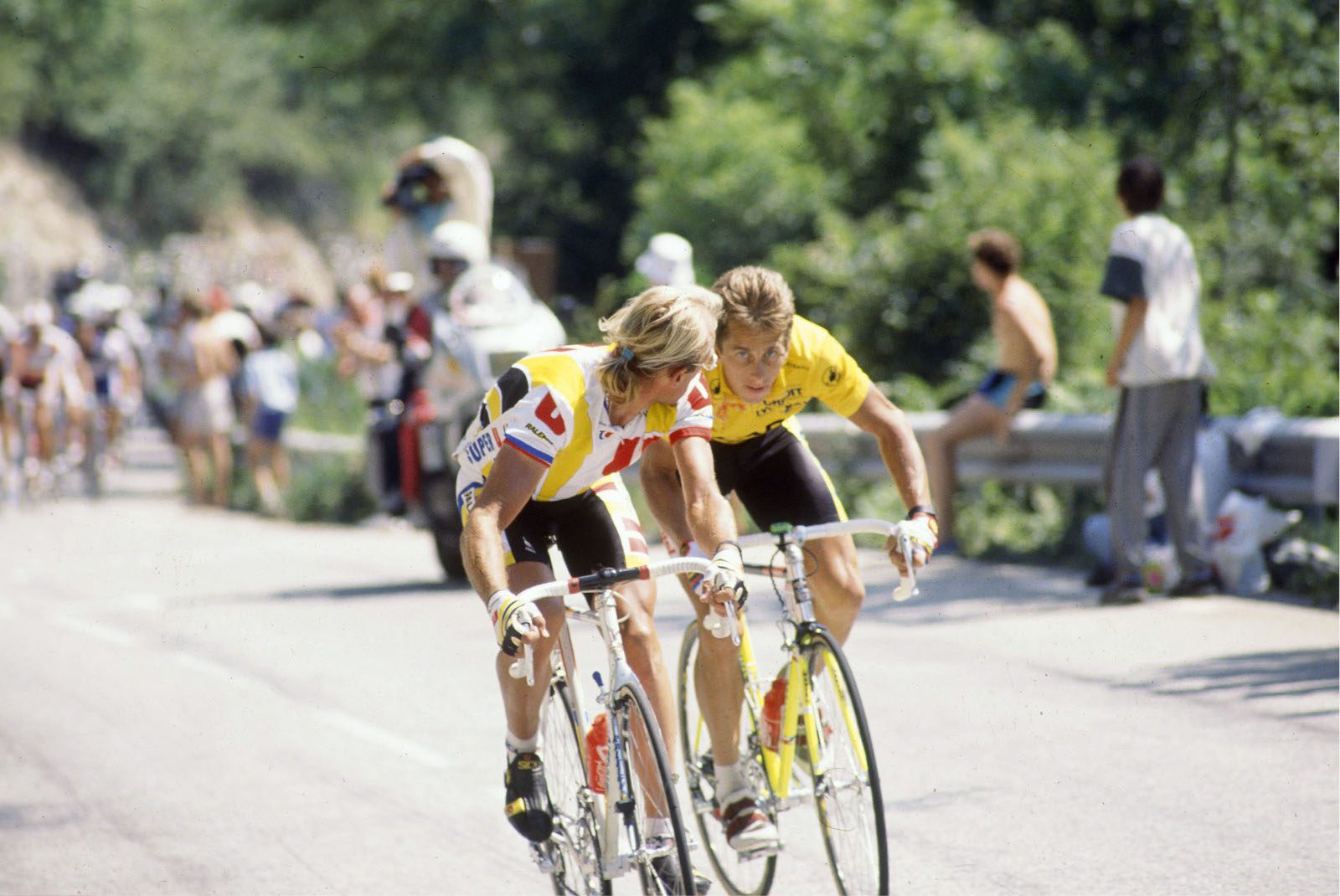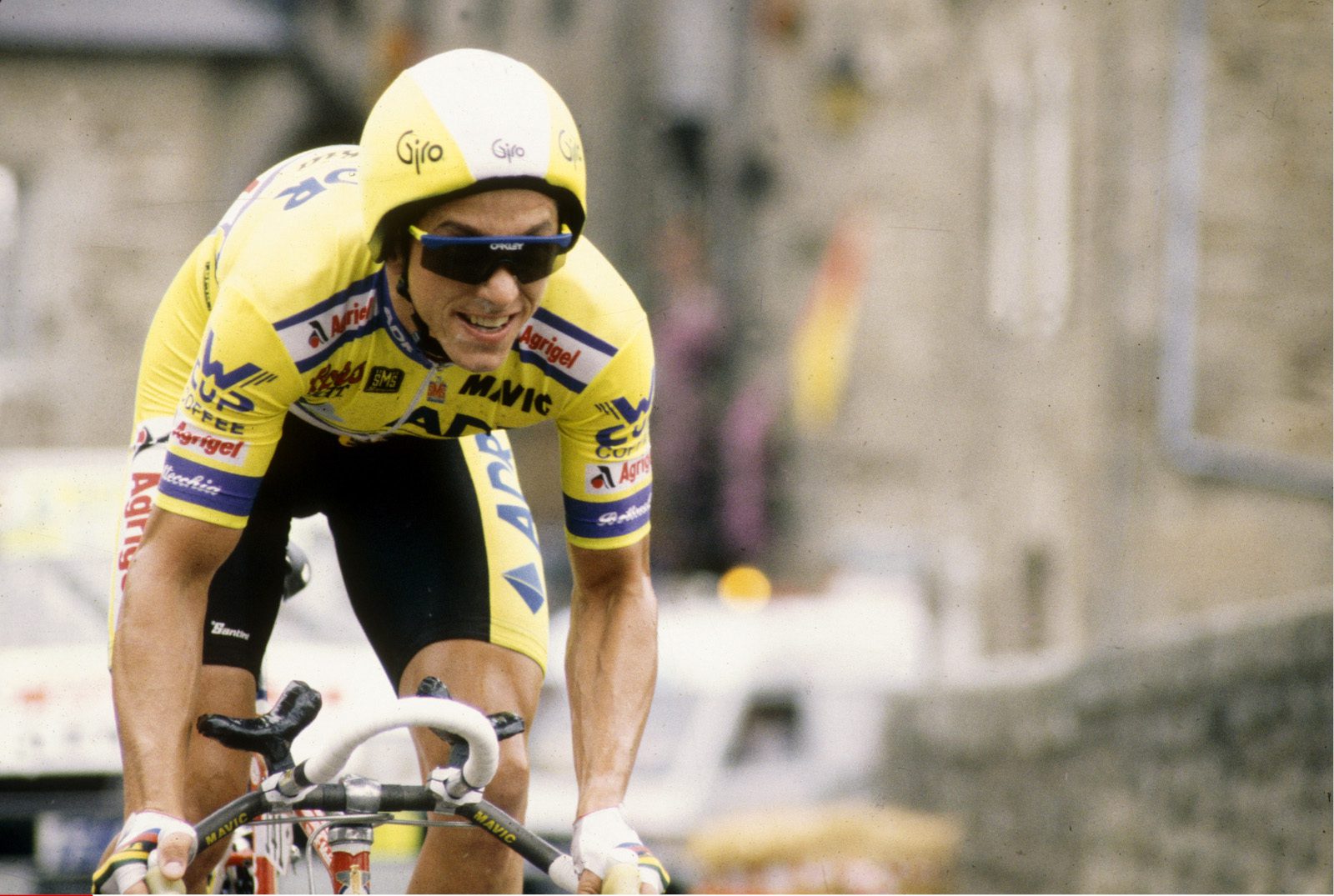Greg LeMond looks back on the best and worst moments of his incredible career
A new film, The Last Rider documents the three-time Tour de France champion’s story
 Photo by:
Offside Sports
Photo by:
Offside Sports
When Greg LeMond began cycling he had a yellow bike and yellow jersey, but had no idea about the significance of the colour to pro bike racing racing. He also certainly didn’t know what was in store for him in the sport. I spoke to the 62-year-old about the new documentary about the American that is currently in theatres, The Last Rider. The film is a series of interviews with LeMond, his wife Kathy, as well as 1988 Tour winner, Pedro Delgado, and former directeur sportif, Cyrille Guimard, among others. The Last Rider follows LeMond’s beginnings to his roller coaster ride in the sport of cycling. After becoming one of the best riders in the world, including a road world championship win at the age of 22, LeMond would go on to become the first American to win the Tour de France. He’s also the only American to have won, given that Lance Armstrong and Floyd Landis have been stripped of their titles.
The Last Rider
This isn’t the first film about LeMond. Slaying the Badger, which came out in 2014, documented the battle between the American and Bernard Hinault at the 1986 Tour.
“I really liked Slaying the Badger, as if you were a non-cyclist it helped you learn about the strategy, just like the Netflix docuseries, Tour de France: Unchained that I’ve been watching,” the Tennessee resident says. “It’s really great for cycling because you just get to see the inside of the sport, the tactics and all that. It does a good job of playing out all the drama with the teams, the exciting parts of the sport.”
Then versus now
Awareness about pro cycling has come a long way in North America. “It’s very different from when I started, obviously. When I began racing I knew very little about the history of cycling. My first bike was yellow. My first jersey was yellow. A guy I raced with as a kid, who later became a good friend, Kent Gordis, told me that I shouldn’t be wearing the jersey,” he says. “After he beat me in about 12 races he came up to me and said that only winners of the Tour could wear it, and I didn’t even know what the Tour de France was at the time!”
LeMond said when he did get into pro racing, even when he met Jacques Anquetil, he didn’t know who he was. “I knew who Eddy Merckx was, and the riders that had raced in the decade before me,” he explains. “You’re going to remember the racers that won the big races ten or fifteen years ago, but that’s it. You’ll remember the Lance Armstrongs, the Miguel Indurains, from twenty years ago, but that’s it. That’s what is so crazy, and humbling, as I was saying to Kathy, that there’s a movie about me from 30 years ago.”
Greg LeMond’s ups and downs as a cyclist
The film focuses on one of the most difficult times in LeMond’s life, the hunting accident. Kathy LeMond describes the ordeal, an emotional and trying time for the family. Personally, having been very familiar with the story, I was surprised to learn even more about the day that LeMond was accidentally shot and some of the additional layers to it.
When the film was being shot in 2022, LeMond was once again fighting illness, having been diagnosed with cancer. He says that the shooting process was difficult for him as he was feeling pretty bad, so he watches the footage that was shot via Zoom, he is grateful that his health has returned. “I had just been diagnosed with Leukemia, but for the past two years I knew something wasn’t right as I was physically wiped out,” he says. “I felt tired and my brain was off at times.”
The comeback king
LeMond underwent treatment and he’s doing much better. When he speaks of his other comeback from poor health, leading up to the 1989 Tour, he said he’s very happy that the film had interviews from Pedro Delgado. Delgado, of course famously missed the start to the prologue at the race, and as a result was almost two minutes down after the first day. LeMond had been dropped by Toshiba–the 1987 iteration of his La Vie Claire, and was then signed in 1988 by the Dutch outfit PDM, only to barely race. The years that followed the hunting accident were tough for him, and he never knew if he’d be able to return to the level he’d been at prior. By 1989, he had few choices for a team, and ended up with the small Belgian squad, ADR. The 1989 Tour is an emotional ride for not just him, but his family. He was grateful to have the input of the former professional cyclist from Spain include in the film.
“Having Delgado in the film was probably the best part,” he says. “I didn’t really know Delgado’s story from the race and it’s funny because when I raced, I’m just focused on the race. It didn’t matter if he was three minutes behind, three months ahead. He was my competitor. I had to beat him. So I wasn’t paying attention to it, although missing the start is probably every ride’s nightmare.”
On Pedro Delgado’s infamous 1989 Tour de France
The two-time world champion says that Delgado got lost, and it’s not that hard to do in the days when riders would warm up on the roads, as opposed to indoor trainers. “He got lost. So it was pretty unusual. I mean, it’s always a worry when you’re warming up. Say you got a flat tire,” he explains. “But you should always be close to the start, 15 minutes before. It was interesting to see the blow by blow after his first week.”
Never a quitter
Many wondered after the brutal start to the race if Perico would quit. He didn’t, and would end up going on to finish third overall. When asked if LeMond would have quit had the same happened to him, he’s quite direct. “Well I’d never miss a start,” he laughs. “But if I did, I still wouldn’t quit. Yeah, I never quit unless I am literally forced to go to the hospital or I just can’t pedal anymore. Delgado is a great guy, a real gentleman, and it was great to have his input in the film.”
As far as the 1989 Tour, LeMond said it was one of the best moments in his career to win in it in such a dramatic fashion. It served not just as redemption for him, but for his family and supporters who had continued to believe in him.
The Canadian Connection: Steve Bauer
LeMond was good friends with Steve Bauer, having raced with him on the La Vie Claire team. There’s a famous photograph of the American consoling Bauer at the 1988 world championships when an irate bunch of Belgians were calling for blood after the Canadian and Claude Criquelion crashed out of the race. Although they would race on different teams after the La Vie Claire days, they still lived in Belgium.
Bauer had the yellow jersey for ten days in the 1990 Tour, and LeMond said that Otto Jacome, his lifelong soigneur, recently told him a story about the Canadian’s lead-up to that race. “Steve asked Otto if he could motorpace him with his vespa,” he says. “And Otto says, ‘Yeah I can do that.” So he took Steve out on the canals in Belgium. And after the training session, Steve asks Otto, ‘How did I do?”
Greg LeMond on his friendship with Steve Bauer
Otto, having seen his fair share of champions, immediately told Bauer that he would have a good Tour. “You’re riding like Greg,” Jacome said. And sure enough, the Fenwick rider would have a great race. Back then, LeMond didn’t have a power meter–although he would go on to become one of the early riders to embrace the tech. Instead he would use his motorpacing as a gauge for his fitness. “If I could motorpace at 85 km/h, I knew I was doing well,” he explains.
The father of three esn’t keep in touch with many of his old peers from his sport, but he has kept in touch with Hinault. In fact, the French rider was the first one to call him after the news of his cancer came out. They also chatted about the old days when LeMond worked as a commentator for Eurosport during 2014-2017. “He’s an exceptional person,” LeMond says. “Sure, he has his ego but he was always very fair to everyone on the team.”
Another rider whom he kept in touch with was the late Laurent Fignon. “We kept in touch quite a bit all the way until a year before he passed away, in 2009,” he recalls. “We had been teammates when we were younger so we had a good bond. I never really understood how devastated he was by the 1989 Tour until later in life.”
Laurent Fignon and the spectre of the 1989 Tour de France
The American explained that he spoke to a journalist, a good friend of the Frenchman, after he died. “He told me that Laurent never went back to the Champs Elysees,” LeMond says. “And for years, he would count out eight seconds. One one thousand, two one thousand, three one thousand.”

The dark days of his childhood
The Last Rider is a deeply personal film and goes into the abuse that LeMond suffered as a child. It was something that would haunt him for years, and took a long time before he could tell Kathy. He says that the shame of being a man who was abused was constantly on his mind, but once he did open up, it helped. Since opening up about the sexual abuse, he’s also had many people contact him who were also survivors. It’s something LeMond is grateful to be able to do, to help people who have also been abused. The documentary delves into that aspect of LeMond’s life and the difficult situations he endured when he rose to fame. It’s a layer of his career that even the biggest followers of his life may not have known, and an important aspect of his story.
The Last Rider is currently in theatres, so be sure to check your local listings to watch the doc about one of the greatest cyclists in history.

